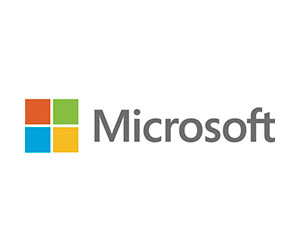EDTECH: What key questions should K–12 administrators ask when considering cloud solutions?
AYOUB: Every industry is being transformed by the cloud, and education is no exception. Administrators should ask about the startup costs, such as licensing and training employees, as well as upkeep costs, such as how often they’ll need to renew or upgrade their licenses. But price is only one factor in determining which cloud solution will be right for your district. It’s also critical to look at all of your needs — from security to which classroom tools will best prepare students for the jobs of tomorrow.
For example, according to a 2018 Forrester report, Microsoft 365 Education made it possible to reduce the need for infrastructure, simplify device setup and management, provide students licenses at no additional cost, decrease integration challenges with built-in features, and meet stringent security and privacy requirements. As a result, districts saved 84 percent more time when setting up classroom devices, 216 more hours per teacher, per year, and $51 per student.
EDTECH: What should administrators know about securing information stored in the cloud?
AYOUB: Security is critical for education environments given the sensitive data transmitted and stored in these systems. That’s why Microsoft 365 is created to meet the security and compliance needs of any customer, regardless of size. We’re always seeking to improve Microsoft 365 security based on customer needs, which is why last year we introduced new advanced security offerings, including identity and threat protection, information protection and compliance.
Security and privacy are also key factors to consider when moving to the cloud. In addition to Microsoft 365’s security offerings, Microsoft also has a variety of built-in privacy and security capabilities to keep students, teachers and schools safe.
MORE FROM EDTECH: Read about how cloud-based storage solutions can protect student privacy.
EDTECH: What are some benefits that make cloud computing a good option for K–12 districts?
AYOUB: The needs and budget of each school district vary, so flexible solutions like the cloud can help districts save on infrastructure costs and space taken up by hardware and servers. That’s why Microsoft offers flexible solutions, such as Microsoft 365 for Education, that make it easy to integrate our full portfolio of cloud-based software into schools and offer more value to district administrators. These can be customized depending on the needs and budget of the school, and help schools save by offering a package versus buying software individually.
EDTECH: Are there other benefits for districts switching to the cloud?
AYOUB: Administrators using cloud-based solutions have more control and insight into data that will help them drive the best possible outcomes for their students. Data analytics empower teachers and administrators with insights, illuminate potential issues, streamline efficiencies and help personalize the learning experience for students. Last year, Microsoft integrated DataSense, a school data integration platform developed by BrightBytes, into our Azure cloud computing service to help schools easily migrate to the cloud and have more control over their data. This gave administrators a single, secure, Microsoft-based service enabling them to control and manage data access explicitly within their district or school.
The cloud also helps to greatly simplify and streamline device management, enabling IT teams in educational institutions to ensure the devices are kept up to date, safe and working well. This not only ensures devices have the latest security updates, but it also enables teachers, administrators and students to have the best productivity experience so they can get their work done quickly and efficiently.
EDTECH: Does cloud computing have any benefits or implications for K–12 students?
AYOUB: We’re continually seeing new technology reshaping industries and changing the future workforce that today’s students will encounter. In fact, it’s estimated that 65 percent of the jobs that will be available to kids don’t exist yet. The cloud gives students access to the latest technological advances, which can help prepare them more adeptly for future careers. This includes affordable, cloud-based solutions, such as Microsoft 365 for Education, that gives students the skills they’ll need to succeed.
Brought to you by:









